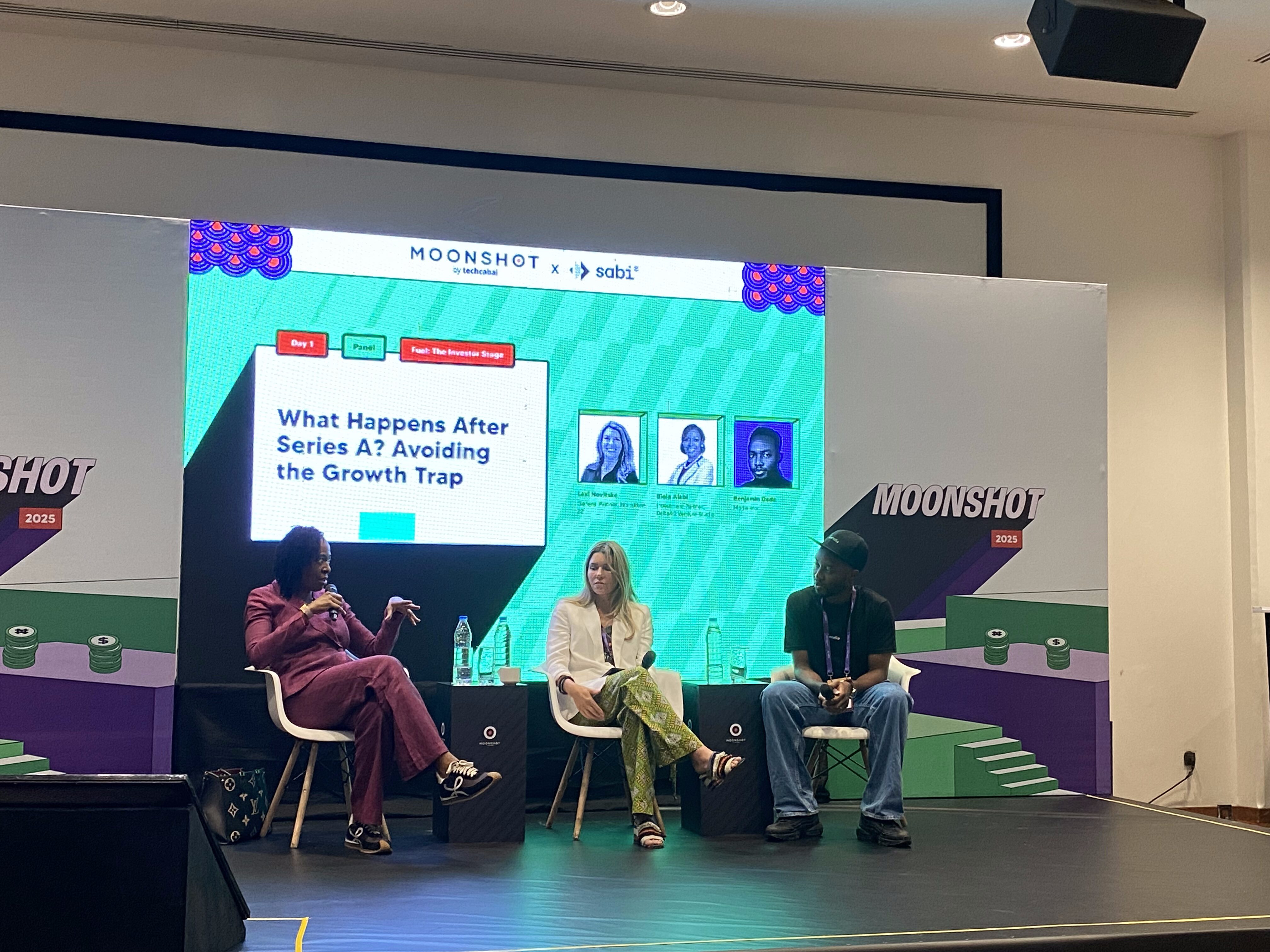It’s one thing to raise your Series A; it’s another to survive it. In today’s cautious funding climate, that milestone no longer signals security, but a new test: can you grow without collapsing under your own weight? That was the core of the question Benjamin Dada, CEO and Publisher of Condia, put to his panellists, Biola Alabi (Investment Partner, Delta40 Venture Studio), and Lexi Novitske (General Partner at Norrsken22)—during a frank conversation on how founders can avoid the post-Series A growth trap.
He went on to explain that, “It takes about 22 months for most startups to move from seed to Series A. So, when you finally get there, the question is, what next? What should you be targeting?”
Novitske explained that while macro conditions have extended fundraising cycles, founders must already be thinking about Series B metrics while raising Series A. “If you’re underperforming on your KPIs,” she warned, “you might still raise your next round, but the momentum will be slow, the round size smaller, and your valuation lower.”
For her, the trap starts early: in how founders plan their growth targets. Many still chase vanity metrics, ignoring that investors now want clear profitability and efficient growth. “We used to focus on GMV,” Alabi said, “but now the conversation is about customer retention, profitability, and the bottom line. You still need to show growth, but it has to be sustainable.”
Alabi built on that point, describing the critical transition between Series A and B as a “personnel shock” for many founders. “You’re no longer seen as a startup; you’re seen as an established company,” she said. “People expect you to have a leadership team that makes sense.” Too many founders, she argued, remain stuck in the “founder-everything” phase, struggling to delegate or trust a team. The result? Burnout, weak execution, and poor people management, the softer side of scaling that few investors talk about. “The soft skills become very important,” she emphasised. “You’re no longer just building a product; you’re building a business.”
Both speakers agreed that many founders underestimate how different investor expectations become after Series A. Growth is no longer enough; it must be efficient, repeatable, and backed by solid financial discipline. “The best companies we’re seeing now,” said Novitske, “still have several million dollars in the bank because they raised smartly, operated efficiently, and can wait another twenty-four months before they need to raise again.”
Alabi added that scalability isn’t just about growth rates, it’s about weathering volatility. “Investors want to know: can you outgrow the continent’s volatility?” she said. “Otherwise, you get stuck trying to explain why your numbers are slipping instead of showing how you’re hedging through growth.” In some cases, she noted, dollar-denominated revenue streams have helped companies navigate local currency swings and maintain investor confidence.
When Dada pushed for practical advice on sustainable scaling, both panellists were clear: growth doesn’t mean spending. “Diversify your revenue sources early,” Novitske advised. “Be selective with your hires, you’ll pay for good talent, but only if they actually contribute to the bottom line.” Alabi agreed, urging founders to “build for efficiency as early as possible, even with AI,” adding that many Series A and B companies are already cutting headcount and automating processes to stay lean.
By the end of the session, the panel’s message was unmistakable. Post-Series A is where hype meets reality. Founders who thrive are the ones who plan for efficiency from day one, focus on retention over reach, and build teams that can lead without them. As Novitske put it bluntly, “If you don’t see a path to creating a billion-dollar company, maybe it’s time to focus on profitability and build for the shareholders you already have.”
Condia is reporting live from Moonshot 2025. Follow our reporting from the ground on socials or by clicking on the link.
Get passive updates on African tech & startups
View and choose the stories to interact with on our WhatsApp Channel
Explore




